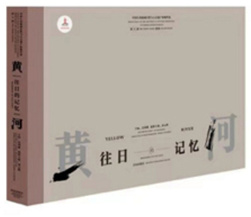
. > WHAT'S NEW > BOOKS
Images capture culture, history, geography of Yellow River
Author : GE JIANXIONG Source : Chinese Social Sciences Today 2019-09-17

Memory of the Past
Image Archives of Natural and Human Heritages of Chinese Rivers: Yellow River is part of the National Key Book Publishing Plan as part of the 13th Five-Year Plan. It made its debut at the 2019 Beijing International Book Fair on Aug. 21–25. The series consists of three books, including Memory of Mountains and Waters, Memory of the Past and Our Memory. With more than 1,000 pieces selected from around 100,000 precious photos taken by photographer Zheng Yunfeng in the 1980s, Ge Jianxiong, a famous historical geographer, presents us with the culture of the Yellow River from the perspectives of geography, history, architecture, art, folklore and religion, etc. This article mainly focuses on Memory of the Past.
Early civilizations were widely distributed throughout China. The Yellow River, the middle and lower reaches of the Yangtze River, and the West Liaohe River are all important areas of origin. However, the Yellow River basin is undoubtedly the most important and the primary area of early civilization in China. It has always been the mother river of the Chinese nation, the cradle of the Chinese civilization.
There have been many ancient civilizations along the Yellow River: the Peiligang culture, the Yangshao culture (including the Banpo site, the Jiangzhai site and the Miaodigou site), the Majiayao culture, the Banshan-Machang culture, the Dawenkou culture and the Longshan culture.
It’s not by chance that the Yellow River basin remained as China’s most developed area from the Paleolithic Age to the Neolithic Age. With the primitive and backward productivity at the time, the natural environment played a decisive role in human activity. At that time, the temperature of the Yellow River Basin was relatively higher than it is at present, and its original environment had not been damaged or interfered with. Therefore, most places were suitable for human survival and development; exhibiting appropriate terrain, mild climates and abundant precipitation. They were close to water but able to evade flooding, in reach of sufficient animals and plants for hunting or gathering, and fertile and loose soil for the cultivation of crops. Outside the Yellow River basin, although similar areas existed, large-scale areas with similar advantages were still lacking.
The ruling area of the Xia Dynasty (c. 2070–c. 1600 BCE) was located largely within the Yellow River basin. The Shang Dynasty (c. 1600–c. 1046 BCE) spread its rule to the Huaihe River basin in its later period. By the end of the 3rd century BC, the territory of the Qin Dynasty (221–206 BCE) had expanded to the Pearl River basin and the Liaohe River basin, but it was not until the middle of the 13th century that centers of political power left the Yellow River basin.
(Edited by YANG LANLAN)
Ye Shengtao made Chinese fairy tales from a wilderness
Ye Shengtao (1894–1988) created the first collection of fairy tales in the history of Chinese children’s literature...
-
How northern ethnicities integrated into Chinese nation
2023-09-18
-
Mogao caves
2023-09-12
-
Mogao Grottoes as ‘a place of pilgrimage’
2023-09-12
-
Time-honored architectural traditions in China
2023-08-29
-
Disentangling the civilizational evolution of China
2023-08-28
-
AI ethics in science fiction
2023-08-23













 2011-2013 by www.cssn.cn. All Rights Reserved
2011-2013 by www.cssn.cn. All Rights Reserved